If there is something that the Covid-19 pandemic taught us, we have no option but to love the outdoors. Cycling allows you to explore the outdoors, meet new faces, bond with your kids and family, and most importantly, do your earthly duty of protecting it.
As cities increase mobility, parents need to learn how to commute with kids. For one, it makes them confident riding bikes alongside cars and other road users. You also raise kids that grow up to be cycling enthusiasts.
As some States grapple with national school bus driver shortages, bike commuting to school is an excellent alternative to driving kids to schools, especially if the school bus is never coming.
This guide gives you some valuable tips for commuting with kids either on their bikes or you carrying them. It does not matter whether they are headed to school or wherever; any parent who wants to get their kids on the road on bikes can use our advice. So, here is your commuting with kids by bike 101.
Is it possible to commute with kids?
A common question parents ask is whether they can bike commute with their kids. Well, we provide the answer here:
You can bike commute with kids when you plan, invest, and commit to your bike commuting schedule. It demands that you have the right gear, bikes, and good organization, just like when commuting without children. Besides, you must develop the morale of the young riders and ensure that they are punctual and well-prepared to ride on the roads alongside other road users. The process also calls for physical efforts, emotional resilience, bike handling skills, and discipline on the road, which are all acquired on the go or before rides. Investing money and time is also mandatory as you plan to commute with kids; it is the only way to make it acceptable, appealing, enjoyable, and possible. Finally, it would help if you planned for riders who can ride independently while being chaperoned and those who will need to be passengers on your bike.
The American Academy of Pediatrics recommends that children between 12 months and four years who can sit unsupported can ride in rear-mounted child bike seats or be towed on bike trailers. So, as long as your child is a one-year plus, you can commute with them on a bike.
Any drastic changes to these conditions perpetually affect your commute. You also have to make adjustments to your commute schedules depending on weather, seasons, age of the kids, and a hoard of other factors.
You need not worry about getting your children cycling to school because thanks to this ultimate guide, you will get useful insights from interesting the kids to bike commuting to how to do it the right way.
Although kids who love mountain biking, road biking, and recreational cycling, kids who commute on their bikes leave a significant environmental impression as they use their bikes responsibly.
Ways to Make Bike Commuting appealing for kids
Whether you are going for work, to the grocery store, or a fair ride around the city or town, throwing a child into the mix often appears challenging than imagines. Here are some tips you can use to interest your kids to commute on bikes.
- Engage them in planning.
Engaging the kids in planning the routes, purchasing bikes, and other gear, and deciding what to wear can help them understand the importance of bike commuting.
- Let them be your co-passenger.
There are many ways to transport kids in tow; you could use trailers, tandem bikes, bike seats, or cargo bikes. Kids will always enjoy and learn as they ride, which makes it easier to transition them into bike commuters when they are grown up enough to pedal
- Cycle with them often.
When your kids are your best cycling buddies, it is easier to convince them to extend the junk miles bike commuting to school. Kids will build their experience and learn more from you, which makes them stable when cycling on the roads or commuting with their peers who ride to school.
- Buy them their favorite bikes.
Another way to make kids love commuting on bikes is by buying them the bikes they love. Whether it is an e-bike, balance, bike, or a pedal bike, get a bike that your kids will always be anticipating to ride.
- Let them see their peers who cycle often.
If you want your kids to love commuting on bikes, expose them to those who commute to school on bikes. You can carefully drive behind a group of kids commuting on bikes to school or follow routes with parents who commute with their kids on bikes. Eventually, the kids acquire a learned behavior.
- Reward them after every commute.
Kids have a way of working to impress us as parents. They will always look forward to it once you show them that commuting on bikes is a great idea. Take the kids out often for a treat for being faithful the entire week, two weeks, or months; it increases consistency.
- Chaperone them as they cycle on the roads.
Kids consider you their role model. Therefore, if you commute to work instead of driving, they will most likely buy the idea when you sell it to them compared to when you are not a bike commuter. Interest them by being an active bike commuter yourself; the chances are that they will follow your leads as a role model.
Nothing is cast in stone; you know your kids better. If you know what presses their buttons right, maximize on it to interest them to bike commuting. There is no single predefined formula that will work better. Anything that can work is a plus.
Benefits of Bike Commuting with Kids
Like cycling, which immensely benefits kids, bike commuting is also beneficial.
- It is one little way your family gets to save the world sustainably. It is a seed that you are planting in an entire future generation, which improves environmental sustainability. As you cycle as a whole family, you save on using gas. Bikes are made from sustainable materials either way. You reduce the amount of pollution from the family car.
- Bike commuting with kids also helps you spend some quality time together, which guarantees bonding with kids. In the process of commuting, the children break the barriers and fears that hold them from discussing their issues with you. In addition, biking is more interactive than driving. While cycling, you can teach your children a thing or two, discuss the weather, share views on people, animals, and plants along the way, and perceive the environment together.
- Bike commuting with kids also improves their physical activity. Compared to kids who commute by bus, your kids will be fresh in class and are likely to perform better. Besides, it is a good form of exercise that can help you save on gym subscription fees. As you haul the kids, you exercise your muscles, which makes for a healthy lifestyle. The kids also get to exercise and enjoy the benefits that come with physical activity.
- Kids who commute on bikes grow to be mindful and responsible. As they share the road with others and you take note of the mistakes of others and teach them how to behave right on the road, they get to be responsible.
- It also improves the social skills of kids as they interact with other kids who cycle to school. Cycling to school is a fun way for kids to make new friends.
- Kids who commute on bikes to school are also likely to extend the practice to college, saving them money. Instead of buying cars that cost so much, they can save up the money for projects and buy bikes to commute to school.
There are also indirect benefits of commuting by bike with kids, making it a fun way to get more kids on bikes. As you introduce cycling to your kids, let them know that riding in cars and buses is not equal to being rich. Besides, commuting on bikes should not be seen as a signal of poverty. Rather, let them see it from the angle of the benefits. It might be a hard button to pass, but it is totally worth the try.
Helpful Tips for Commuting with Children
One of the major challenges parents face once they sacrifice driving for bike commuting is not the demanding nature of commuting but getting kids to commute to school or work without a car.
Adding kids to the bike commuting equation complicates matters. You will need to make necessary adjustments, but this does not have to prevent you from hopping on your bikes and cycling with your kids every morning and evening.
We have explored some important tips that can help you include your children in bike commutes.
Know your State Bike Laws
As an intangible, before you decide whether or not to commute, make sure that you understand the state bike laws that also govern commuting with kids.
Bike League has a comprehensive article that details bike laws by state.
Essentially, you must be aware of sidewalk riding, helmet laws, treatment as a vehicle, where to ride, and safe passing laws, among others, as they affect where, how, and when you commute with kids.
Once you know the respective state bike laws, it is now time to focus on the tangibles – getting the right gear.
Commit to commute by bike
It is usual to begin commuting with morale only to abandon it halfway. To avoid such, think of these incentives that come alongside commuting:
- You will save on gas
- The kids get to enjoy all the benefits of cycling
- Save time because there will be no traffic
- You'll reduce your carbon footprint as a family
There is also a myriad of direct and indirect benefits that come with commuting.
Invest in the right gear
There is no single bullet to mastering bike commuting. However, suppose you are just entering in this entirely new world and activity. In that case, you need to invest right, especially considering you have kids' cycling needs to cater for as well as yours.
Invest in child bike seats, trailers, trailer-cycles/tag-along bikes, cargo bikes, and kids' bikes. For the seats, both rear and front-mounted bike seats will work well for kids who cannot cycle independently. Likewise, you can haul kids using bike trailers, long-tail bikes, and cargo bikes. You can also get a mid-tail bike such as the Kona MiNute bike, Yuba Boda Boda, or the Yuba Mundo bike for kids who cannot yet take trail-a-bike.
Go for tag-along or tandem bikes for the kids who can pedal; they help you boost them when they are too tired to pedal. Trailer cycles also allow you to keep an eye on the kids and keep them close, which is nice when riding in traffic.
Get the right size of a bike for kids who can cycle on their own.
Plan adequately
Bike commuting with kids is not something you wake up to; you need to sleep and dream it. Therefore, it is important not only to plan the commute but the safety aspect of the commute. It is probably time to insist that wearing a helmet and adorning bikes with bike lights must be done before any ride. Besides, have the bikes checked, repaired, and maintained well.
Educate the kids beforehand on how to ride while in the group. This is where our bike safety tips for kids come in handy. They should ride in front, behind, and besides the adult riders for safety.
It is also the time to ensure that the bike safety checklist is all ticked to avoid inconveniences during the ride. If possible. Plan the safest route together with the kids and let them know what obstacles or challenges to expect.
You can also budget your time to include a few more minutes for a route compared to when you are commuting solo.
Before every ride, perform an ABCD check on both your bike and those of your kid to ensure that it is roadworthy. Also insist that it is your instructions to be followed and nobody should be left behind.
After the ride, go through the experience and correct a few mistakes to make the future commutes even more exciting and enjoyable.
Choose a safe route
Although shortest roots mean reduced cycling efforts, they are sometimes never the best. Therefore, choosing a quiet, low-traffic residential street, sidewalks, cycling lanes, and multi-use paths with no distractions or obstacles is vital.
You can use applications such as Google Map's cycling routes, STRAVA, or Komoot as resources to plan the potential routes to ride with your kids as you commute.
Riding on a pre-planned route helps save time, avoid obstacles, and meet other cyclists who can boost the morale, especially when either of you is almost giving up.
As you choose the routes, please share them with the kids. Then, they can store the routes on their bike odometers or bike computers.
Build the cycling Skills of the kids
We will cover some of the skills you need to instill in your kids before commuting with them on bikes.
The better they are in terms of skills, the higher the chances that commuting with the kids will be enjoyable.
You will spend little time barking at them to follow the rules or execute a given skill.
Dress Right for the commute
Whether alone or with kids, commuting on a bike demands that you invest in the proper clothing.
Nothing is annoying like a whiny kid when wet, cold, or too hot. As you plan to commute with the kids, choose good clothes depending on the weather.
If it is hot or during summer, choose lighter yet visible clothes and moisture-wicking caps. You can also select routes with shade and avoid commuting when it is too hot. You can also plan to bring ice water, apply sunscreen, and use ventilated helmets and jerseys. Invest in high-quality cold gear such as balaclavas, gloves, cycling hoodies, raincoats, etc. If it is winter, make sure you prepare your kid for winter cycling.
During spring or fall, considered shoulder season, ensure that you have additional clothing in the backpacks. Then, when it is a rainy season, instead of hanging up on your commute, buy waterproof jackets and pants for yourself and your kids. They can wear them on top of regular clothing to avoid being wet.
Bring snacks and water
Although the kids filled up at home, it is also essential to bring along snacks and water to avoid unnecessary stops by cafes and ice cream trucks.
Halfway through a commute, the kids are always hungry despite having eaten nutritious meals. So, instead of worrying too much, plan and carry some snacks for the commute.
For the water, the kids could independently carry water in their water bottles or hydration packs.
When the ride is long and challenging, snack is the fuel that keeps kids entertained and psyched up.
Ensure that the kids are accompanied
Young children, especially those ten years or younger, do not possess the skills needed to bike independently.
If they must cycle in your absence, ensure that an adult accompanies them to escort them to school.
Encourage them to commute as a group if they are old enough, and you are sure that the chosen route is safe and quiet.
Play games during the commute
Parents who often commute with their kids have reported that playing games can make bike commuting fun.
You can sing with them or play who reaches a given landmark first. In addition, you can do role-playing, and I Spy, which are great games that make commutes fun.
Playing games also make kids enjoy rides and want to do them often.
Ensure your bike train is visible
Although it is easier to find a bike path or roads with minimal traffic, no one knows who is behind the wheels of these cars. There are times when drivers divert to the paths with minimal traffic to save time. This only means that you need to ensure that the kids on your commuting bike train and yourself are visible to other road users.
You can purchase reflective tapes and put them on your bike, your kids' bike, helmets, or the carriers you are using to tow your kid. Equally, you can buy front and rear bike lights. For the trailers, get the reflective flag to improve visibility on the roads.
You can also get the kids' reflective vests like those worn by bike night road crews to improve visibility on the roads. You'd rather your bike train looks like a rolling Christmas tree and increase visibility than be victims of lack of it.
Wear bike helmets
Both you and the kids need to wear snug-fitting bike helmets. Helmets are safety gear that helps cyclists in instances when falls or collisions occur.
Although some areas and states have mandatory cycling helmet laws, getting a helmet on is a no-brainer. We have reviewed the best bike helmets for kids to make it easier for you to pick the suitable one for your kid.
Reward the kids for their commitment
To make commuting memorable and fun for kids, take a rest day and treat them. This can be done either weekly or every fortnight.
When the kids are rewarded, they commit their minds, efforts, and abilities to commute. It also helps them see value in riding bikes to school or other places while the rest ride in cars and bikes.
Organize cycling in Groups (The Bike Train)
It is easier to cycle and be respected on the road when in large numbers. Drivers and other road users will appreciate your efforts, and who knows, you might get recognition from prominent leaders too.
Riding in groups makes it more fun for kids. They get to share their experiences, create friendships, and develop social skills. If you can coordinate your rides with other parents in your neighborhoods, the better.
Let them have meeting points where their kids and themselves can join in the bike train or bike bus.
You will notice that your kid will be faster and focused when riding with their agemates and peers. You also get to interact with bike-minded parents from whom you can learn a thing or two.
Skills to teach kids before letting them cycle on roads
Whether your kid is cycling independently while being chaperoned, as a co-rider, or a passenger, they need to develop essential skills to enable them to cycle on the road safely.
With all the strictness, if your kid can cycle independently, ensure that they have received adequate training on how to cycle on the road.
Like osmosis, your child will be picking some bike commuting skills from you. Therefore, you must do the right things when commuting with kids. The skills improve the bike-ability of your kids, which makes them safe when cycling on roads.
It is vital that they also learn some of these skills:
Bike Balancing and control
Before cycling with your kid on the roads, it is vital to ensure that they can balance and control their bikes. It is imperative because of the inconveniences that occur on the road. For instance, some drivers might cause the kids
Bike awareness
Show your child how to check if their bike is in the right shape. Ensure that they can tell when the bike needs servicing, parts replacement, or tuning.
For instance, let them know how to tell if the bearings in the bottom bracket are worn out. Also, teach them how to carefully oil the chain using chain lubes.
Let them also know how to change tubes on their own. If they are using cleated shoes, only allow them to cycle with them if they are aware of how to operate them.
Braking
Another critical skill that your little ones need to practice is braking. Let them learn how and when to engage brakes without causing mishaps such as flying above the handlebars.
Assess how they brake when cycling before you to ensure that they can quickly brake when cycling alongside other cyclists.
Gearing or Gear shifting
If your child does not know how to shift gears, ensure that they learn and master gear shifting.
Gears are meant to make rides smooth. Low gears make it easier to cycle, especially when climbing a hill or an elevated path.
To set a low gear on a bike, you need to shift the chain to the smallest chainring on the front and the largest cog on the cassette (the rear gears) – popularly known as downshifting. In the position, pedaling becomes easy as it reduces resistance. Conversely, high gear makes pedaling hard and is suitable for descending.
You can let the kid upshift by having the highest gear on the smallest chainring on the front and the largest cog on the rear gear.
That way, the kid can pedal harder, which helps build a good momentum for the descent. Let them know the dangers of cross chaining while cycling and how to avoid it.
Maneuvering through traffic jams
Sometimes the bike lanes get clogged, and cyclists save time by going through traffic. Ensure that your child knows how to maneuver through traffic to make it easier for them to go alongside vehicles without provoking drivers.
Using the bells, horns, or whistles
Ensure that your child knows when and how to use a bike bell, horn, or whistle. Unnecessary use of bells, whistles, and horns can disturb other road users and likely cause accidents. Ensure that they know the appropriate distance to use the bells.
Traffic awareness
Make sure that your child knows how to look ahead and behind them before changing position on the road, before stopping, or before slowing down.
You can do this by holding your fingers and counting up to 5 seconds to check if they are looking.
Equally, teach your child how to signal drivers when slowing down, stopping, making a turn, or when there is an emergency ahead.
Traffic awareness helps prevent mishaps either from pedestrians or other road users such as drivers and fellow cyclists.
Making Turns
On junctions, avenues, and corners are where most accidents happen. Therefore, it is essential to teach your child who has priority or the right of way to go through a given junction so that your kids can be on the right. This is beneficial in places with traffic lights, a high number of pedestrians, or other road users.
Positioning
You can also train your child on how to position themselves on a bike lane, between other cyclists, and when overtaking a car. Although some kids might not want to take the cycling lane, insist that it is the only safest spot when cycling alongside traffic.
Recommended Kits and Gear for Bike commuting with Kids
Nobody said that with all the accruing benefits, bike commuting with kids would come easy. Like family cycling, it needs proper investment, which becomes much of saving than spending in the long-term.
Instead of paying for the school bus, burning gas, or paying organized private transporters, commuting on a bike requires one-time investments and ongoing small investments.
To successfully execute a bike commuting plan with kids in the equation, you must invest in good cycling gear and accessories.
Do not worry if choosing the best is not your thing because we have already reviewed some of these gears. In addition, where necessary, you will find links to our collective and independent reviews of each item.
Let's have a closer look.
Bike Bells
Having a bell on a bike is a no-brainer. On a bike commute, the bells are used to communicate with the kids and other road users.
Some people prefer whistles and bike horns to the bell. Ding dong! You can use the bike bells when playing games as you commute.
For instance, you can ask your kid questions or tell them something then they can affirm that they understood you by ringing the bell in a rhythm. It is like some sort of morse code when bike commuting.
To help you choose the best bike bell for your kid, we have compiled a list of the best bike bells for kids. Please go through it and let us know your thoughts.
Reflectors
This is a no-brainer for anyone who cycles where there is traffic. It is important to invest in reflectors to improve visibility.
You can buy reflector tapes for bikes, bike seats, tag-along bikes, trailers, reflector vests for the riders, and reflector flags to ensure that other road users can spot you.
Reflectors announce that "hey, here comes a cyclist, please take care!" which helps you avoid any mishaps when commuting on your bike.
When the entire bike train (a group of bike commuters) has reflectors, it is easy even for distracted drivers to respect it and observe some distance.
Helmets
Depending on your state and local authorities, wearing a helmet might be a legal requirement for kids below a certain age. Even if it was not demanded by law, the benefits of wearing one when cycling outdo the fatal consequences of not wearing one.
Do not just go for any helmet for the sale of it, especially for kids. Instead, go for the best bike helmet for kids and ensure that they wear it properly.
Check out our best list of babies and toddlers' helmets. It also has a buyer's guide that can guide you through purchasing a toddler or infant helmet. There are also girls-specific helmets for kids.
Buying a helmet is one thing and ensuring your kid wears the helmet correctly is another thing altogether.
Bikes
When it comes to choosing the right size of a bike for your kid, you must do it meticulously. Any mistake with the choice could lead to accidents, injuries, and strong hate for cycling. We have a guide that can help you choose suitable kids' pedal bikes, select the best kids' BMX, and settle for a suitable MTB for your kid. Do not shy away from visiting the local bike shop to shop for a good bike for your kid. And remember, well-maintained and clean bikes ride better.
Saddle and handlebar bags
For that extra storage, we recommend that you get your kids either saddle or handlebar bags that can fit their bikes.
They can put some snacks and throw in some essentials that they might need on the ride. In addition, some bike handlebar bags come with reflectors, which increases visibility.
Puncture repair kits
Unless you have converted your kids' bike tires to tubeless, you will need to carry a puncture repair kit.
There are many puncture repair kit options available online. Do not see it as a load because it helps to mend punctures on the go without wasting time.
It is important to train your kids on how to repair punctures. As handy as kids are, the skill will last with them a lifetime.
Bike locks
Although some bike locks are cumbersome to carry, there are lighter and kid-friendly bike locks that kids can carry to school. Bike locks are necessary to deter bike theft in school or when stopping for a snack at the café. Purchase a suitable kid-specific bike lock and have them carry them along as they commute. Although this might add more weight, it is almost negligible.
Tag-along or Tow-along
As you cycle with the kids, remember to purchase tag-along bikes for the kids who cannot cycle on their own for long or are learning to pedal.
You can pull them along when they are tired.
The same applies to tow devices such as tow ropes. In addition, we have reviewed the best tag-along bikes that can fit kids of different sizes and ages so that you can make a choice quickly.
Tag-along or trailer-cycles are appropriate if you have bigger kids who enjoy cycling on their balance bike or cycling with stabilizers or a beginner rider who is not yet so confident. They can pedal along with you.
You get the peace of mind that your kid is safe. The close distance also allows communication and bonding. Consider trail-a-bike options such as Tout-Terrain Streamliner, FollowMe Tandem, Wehoo, and Burley Piccolo.
Tandem bikes
As the child grows old enough to cycle independently, you can consider buying a tandem bike apart from trail-a-bike.
Tandem bikes are great gear for bike touring. They allow you and your kid to cycle your hearts out.
If you are into space, check out the Tandem Two's Day by Bike Friday, which is designed with kids in mind – and er! It folds. You can also check other viable tandem bike options that fit kids.
Once the kids hit the magical age when they can pedal independently but are too timid to ride on their own, a tandem bike is one of the options to consider.
Nothing beats the thrill of having a bike with two or three wheels carrying two people.
Trailers
Bike trailers are another bike accessory that comes in handy for parents who cycle with kids. The bike trailers attach to the rear axle of the adult bike wheel and help you haul kids from behind.
Bike trailers are suitable for kids 1-6 years of age or up to 40 and sometimes 80 pounds.
The good thing is that the kids are protected from the elements. In addition, these trailers have enough room for the child and some more space for storage.
You can fold and store them when not in use. In addition, bike trailers can carry two children or a child, making them a great choice if you have twins or children close in age.
With a maximum weight limit of 100 lbs, you can be sure to get a good service from bike trailers when commuting. We have rounded up the top-performing bike trailers in the market in case you need to purchase one.
Child Bike seats
Child seats for bikes are a simple yet valuable innovation that helps you haul children. They conveniently take less space and do not add as much weight to your bike. You can also mount and detach them easily when not in use.
You can mount them on the frames or carriers/rack. With a bike seat, you and your child are close together, which improves bonding through games, interaction, and communication.
Child bike seats are good for kids of ages 1-4 years or up to 50 lbs.
You need to choose a good bike seat for your kid. Whether it is a front- or rear-mounted bike seat, ensure that the seat you buy fits your child's age, size, and stature.
The bike seats are appropriate for kids who want to be passengers and cannot independently cycle. We have a helpful bike seats buyers' guide that can help you settle on the best bike seat for your kid.
Also, check the MTB-specific child bike seats if you commute on a mountain bike.
Cargo Bikes
Although not so common, cargo bikes are designed to carry too much load up to the capacity of 200 lbs. there are cargo bikes that come with a special box where you can haul both cargo and kids. The space is comfortable for the little groms, which can come in handy as you commute with them.
Cargo bikes are also great for carrying more stuff more than a standard adult bike would do.
Although their workhorse ability comes at a higher price and too much cumbersomeness to maneuver, if you love the thrill of cycling with your kid, they are so good an investment to consider.
You might need to budget from $1500 onwards for a good cargo bike. You can either go for a mid-tail or a long-tail cargo bike too. There are also the front-loading cargo bikes called Bakfiets that let you haul kids in a box or container set on the front cargo rack between the front wheels and the handlebars.
Depending on the setup, cargo bikes can be used to haul both younger and older kids.
Hydration Packs
When planning to cycle, intend to invest in a good kid-specific hydration pack. Hydration packs help kids to carry water on their own and drink it while on the go. If you cannot get a hydration pack, a cycling water bottle will suffice, but you have to also think about water bottle holders or cages for your kids' bikes.
Rain Jackets
Weather is predictable or at least not predictable sometimes. Whichever the case, you need to have rain jackets that kids and yourself can wear when cycling.
Instead of getting to your destinations wet and cold, rain jackets can help the kids trap some heat and stay dry as they ride in the rain.
Invest in reflective rain jackets to improve visibility while on the road.
Bike lights
Investing in high-quality, all-weather, and easy to charge bike lights is not substitutable. You and your kids need to be seen on the road. The only way to achieve this better is through getting a headlight and a rear bike right.
Parting Shot!
Daily commute by car is boring. You can throw in more fun to your commute by cycling with your child to school or daycare, which is efficient as most parents do. Its enjoyable, beneficial, and environmentally friendly. Your kids also get to exercise more quickly than quitting some game or program to hit the gym.
This guide has covered almost every aspect you need to consider as you set out to commute by bike with your kids. You need to plan it adequately, engage everyone, and make it a success by committing to the routine.
In terms of meeting the cycling needs of your kid, we have put together an entire list of useful resources about kids' bikes, which can help you teach the kids how to ride, choose appropriate local trails, teach your kid how to clean a bike, accessorize your kids' bikes, entice kids into cycling, plan family bike tours and camping, choose the best kids bike brands, and pretty much everything you need to know about cycling for kids and with kids.
Take your time to go over the resource and make wise decisions regarding gears, bikes, and accessories. Then, thus far, if there is further information you feel could help the bike commuting community, go ahead and let us know in the comments section.

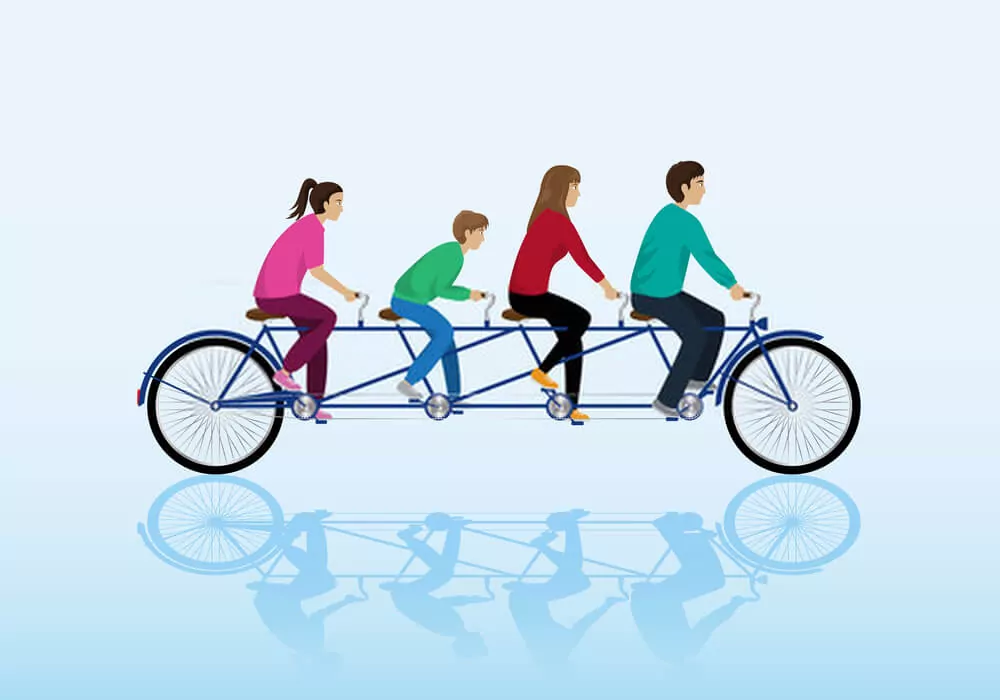

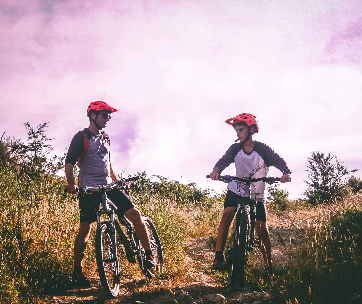

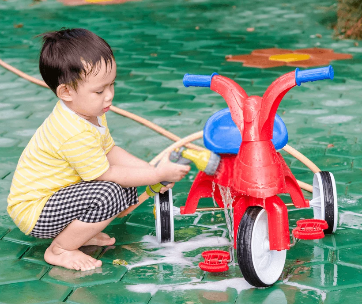
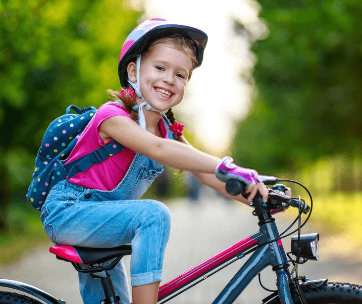
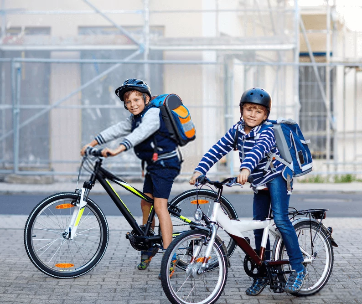
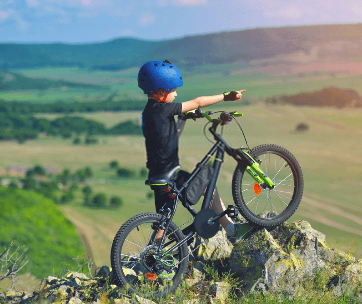

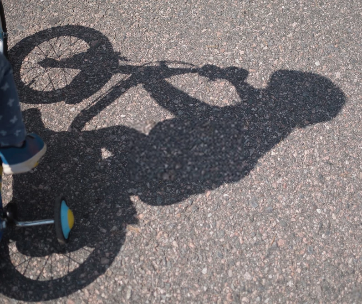

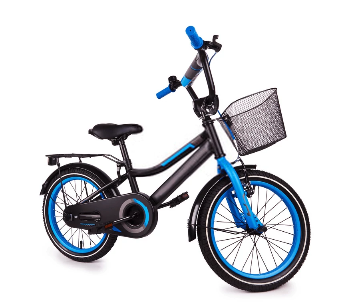

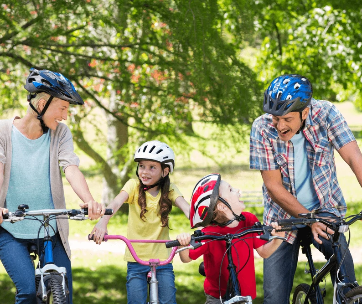
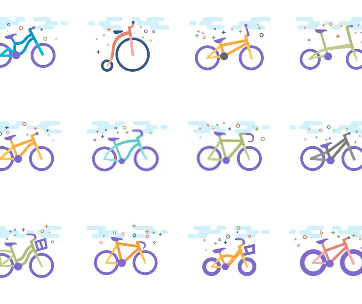




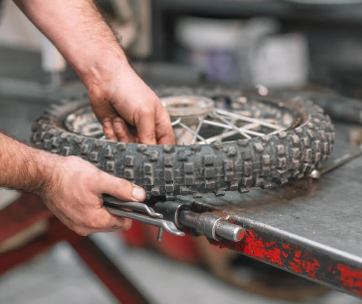
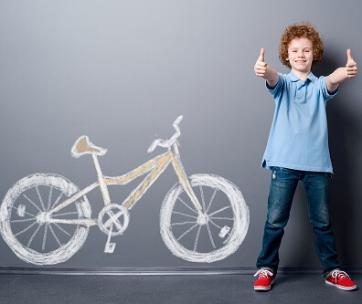
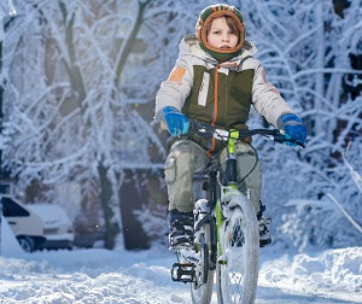


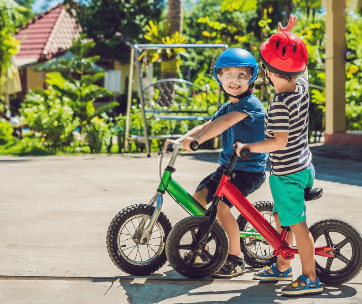
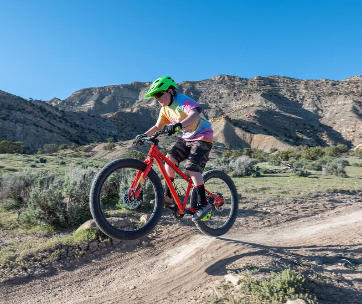
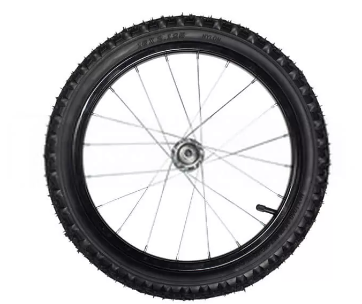
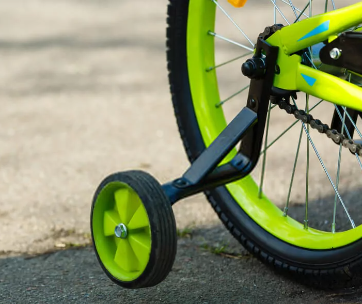
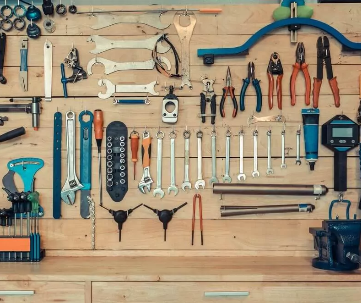
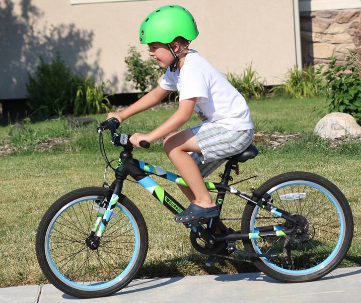
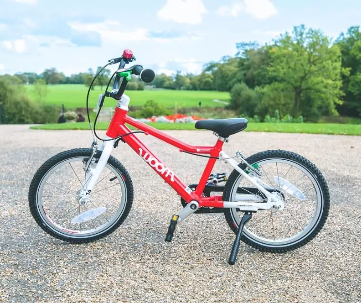
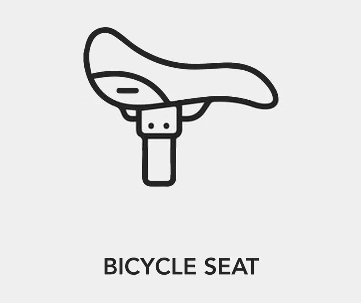
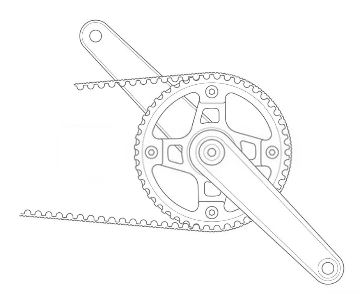
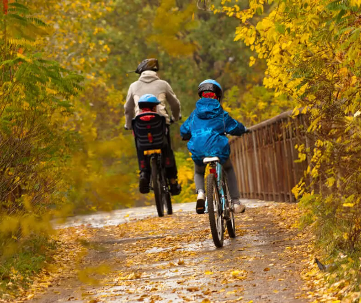
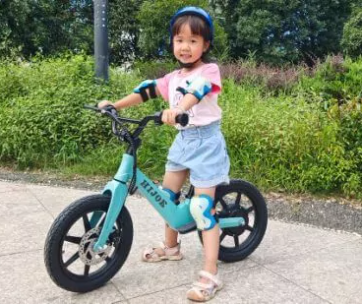

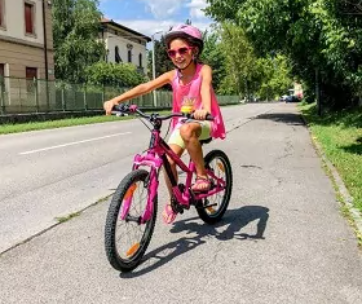
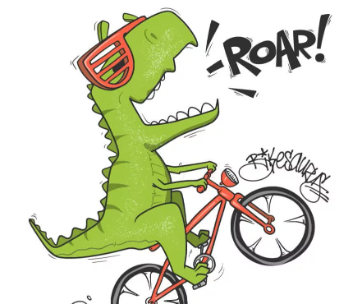
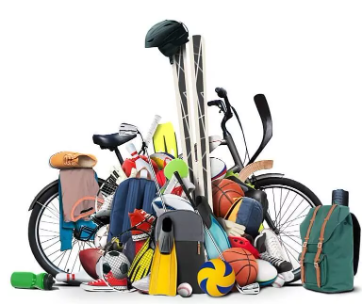
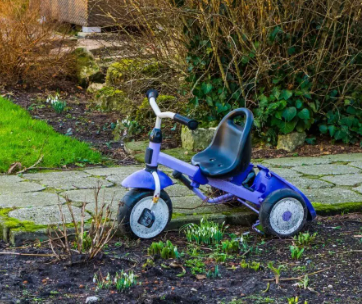
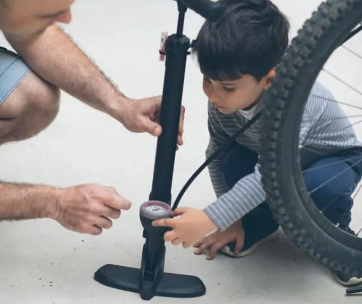
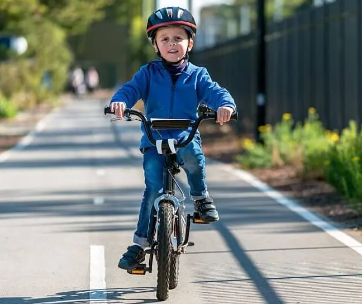
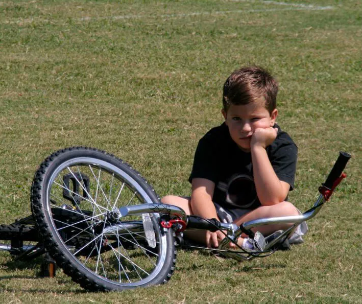
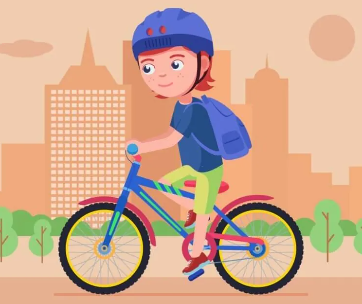
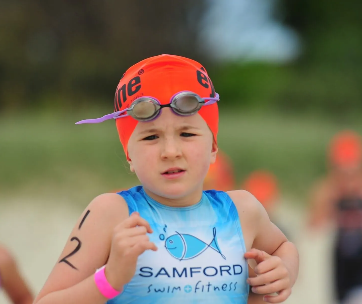
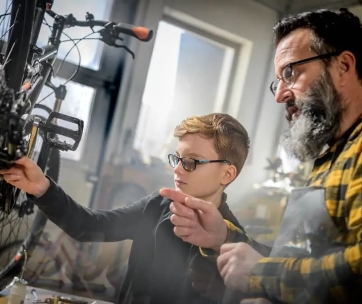

Comments